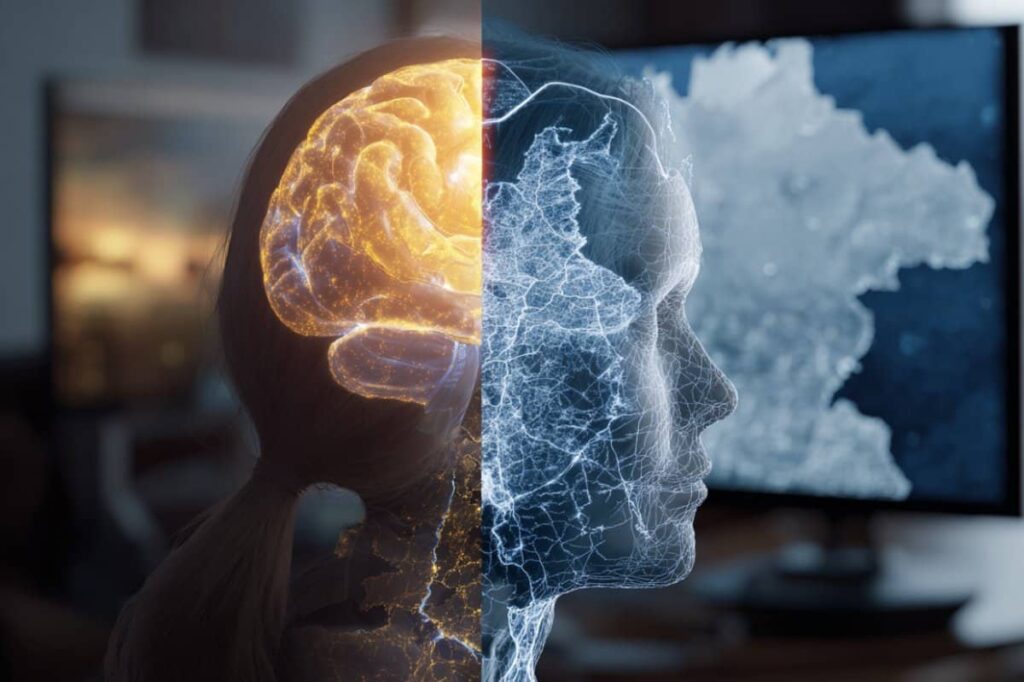
When you picture a map in your mind, your brain navigates it using different pathways than when you actually look at one. A recent study on spatial attention reveals that while visual attention relies heavily on posterior brain regions, mental imagery depends more on frontal areas. This intriguing discovery highlights the distinct neural mechanisms the brain engages when processing imagined versus perceived spaces.
Conducted by researchers Anthony Clément and Catherine Tallon-Baudry at École normale supérieure, the study involved participants recalling the map of France and judging which city was closer to Paris. Brain recordings showed that visual attention engaged posterior brain regions, whereas mental imagery activated frontal networks. These findings, published in the Journal of Neuroscience, suggest that the brain processes imagined and perceived spaces differently, offering new insights into memory and consciousness.
Distinct Neural Pathways in Spatial Attention
The research underscores a critical distinction in how the brain navigates real versus imagined spaces. Visual attention engages posterior brain regions, while mental imagery relies on frontal networks. This separation in neural pathways suggests that the brain does not simply reuse mechanisms for visual perception when engaging in mental imagery.
Spatial attention, akin to a spotlight, enhances the processing of specific regions within a visual scene. The study aimed to determine if people orient spatial attention similarly when processing mental images from memory. The results indicate that while individuals can direct spatial attention within mental images, the underlying brain mechanisms differ from those used in visual perception.
Exploring the “Mind’s Eye”
In the experimental setup, participants were asked to recall the map of France from memory and focus their attention on different parts of their mental maps. At the end of each trial, they were presented with two city names on a screen and tasked with imagining their locations on the map to decide which was closer to Paris.
Clément explains,
“Our findings suggest that when we explore a mental image in our ‘mind’s eye,’ we don’t simply reuse the brain mechanisms we rely on when looking at the world. This distinction may help us refine how we think about internal experiences like mental imagery, memory, thoughts, and even consciousness.”
This insight could have profound implications for understanding how the brain constructs and navigates internal experiences.
Implications for Memory and Consciousness
The study’s findings open new avenues for exploring how memory and consciousness are intertwined with spatial attention. By demonstrating that mental imagery engages distinct neural pathways, the research challenges previous assumptions that visual perception and mental imagery share the same mechanisms.
This development follows a growing body of research suggesting that mental imagery is more complex than previously thought. It also raises questions about how the brain organizes and retrieves information from long-term memory, potentially influencing how we understand cognitive processes like memory recall and decision-making.
Future Directions and Research
As neuroscience continues to unravel the complexities of the human brain, studies like this one provide valuable insights into the distinct mechanisms underlying mental processes. Future research could explore how these findings apply to other forms of mental imagery and whether similar distinctions exist in other cognitive functions.
The move represents a significant step forward in understanding the neural basis of mental imagery and its role in memory and consciousness. By shedding light on the unique pathways the brain uses for imagined and perceived spaces, researchers can better understand how we navigate both the external world and our internal landscapes.
In conclusion, this study not only enhances our understanding of spatial attention but also provides a foundation for future investigations into the neural mechanisms that support mental imagery and its impact on cognitive processes.






